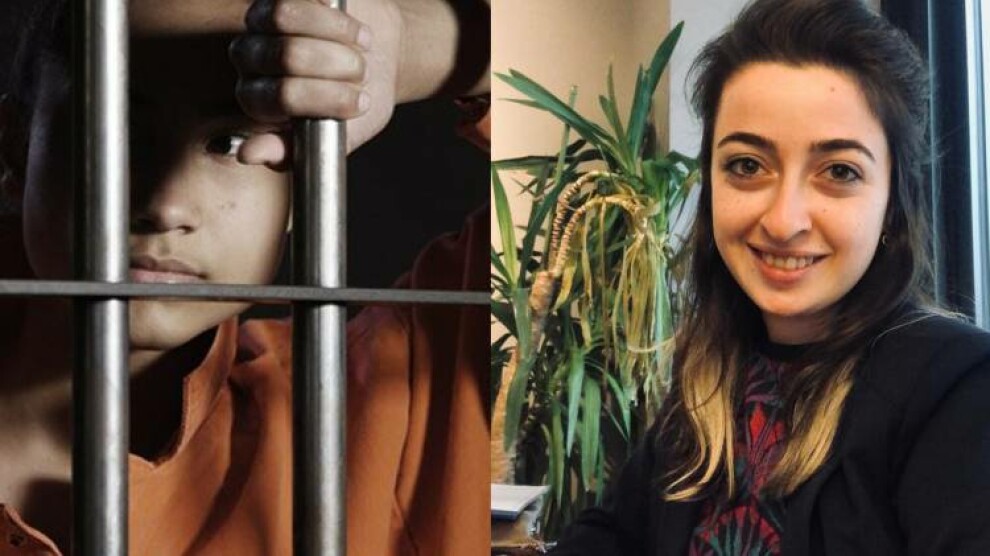“Children are tried in adult courts not juvenile courts!”
“Since the Juvenile Protection Law was entered into force in 2005, the establishment and regulation of child courts in all provinces are still uncompleted. In some cases, children can be tried in adult courts even if there is a juvenile court and this is a common situation,” says Cansu Şekerci, representative of the Child in Prison thematic area of the Civil Society in the Penal System (CISST).

“Since the Juvenile Protection Law was entered into force in 2005, the establishment and regulation of child courts in all provinces are still uncompleted. In some cases, children can be tried in adult courts even if there is a juvenile court and this is a common situation,” says Cansu Şekerci, representative of the Child in Prison thematic area of the Civil Society in the Penal System (CISST).
EKİM ZEYNEP YAĞMUR
Ankara- We interviewed Cansu Şekerci, the representative of the Child in Prison thematic area of the Civil Society in the Penal System (CISST), about long trials for children and the restrictions caused by the Covid-19 pandemic outbreak.
· In Turkey, one of the juvenile prisons becomes the main topic of conversation almost every year with allegations of maltreatment, sexual abuse, harassment but the practices carried out in the prisons are invisible to society. Why are violations of rights in prisons invisible?
Generally, the reason why these prisons are invisible is their place in practice; it is one of the areas where society can easily accept to ignore. This approach is a reflection of the retributive justice system. In contrast to the retributive justice system, the restorative justice approach aims are to repair the harm caused by crimes, and victims, offenders, and community members meet to decide how to do that. For this reason, this approach is expected to be more protective of rights and freedoms.
In particular, the reason why the child prisoners are more invisible in this system is that the penal system is planned for adults and the lack of adequate regulation and perspective that takes into account the risks against children and the needs of children.
· Turkey signed the United Nations Convention on the Rights of the Child (CRC) and in the Turkish Child Protection Law, has been stated that the arrest, detention, or imprisonment of a child shall be in conformity with the law and shall be used only as a measure of last resort and for the shortest appropriate period of time. However, this principle is largely ignored by the courts.
According to the data shared by the Ministry of Justice in November 2018, the percent of prisoners was 30 while the rate of children in prison was 57%. The rate shows us that the arrest, detention, or imprisonment of a child is not used as a measure of last resort by judicial bodies. The Child Protection Law and other relevant legislation actually have some regulations that ensure the protection and support of children who are brought before the courts. But judicial bodies don’t have this motivation and this causes serious problems. The legislative, executive and judicial organs have the main responsibility and authority in the correction of practices. The children's rights movement has become an important resource in the development of this system with its research, monitoring, advocacy, and reporting activities and expertise. It is an important solution way to prevent violations of rights by carrying out activities for child's rights.
· Since the state signed and is a part of the convention, why do children still face poverty, discrimination, and inequality?
It is not enough to sign a convention to prevent violations of rights. The system must be transformed and developed in order to implement the convention. The violations of rights cannot be prevented unless there is a necessary control mechanism to prevent violations of rights.
The establishment and regulation of child courts are still uncompleted
According to the laws, the juvenile prosecutors' offices, juvenile courts, and juvenile heavy penal courts are responsible for carrying out of trials opened against crimes allegedly committed by children. Even if the laws state that, the establishment and regulation of child courts in all provinces have been uncompleted since the Juvenile Protection Law was entered into force in 2005. In some cases, children can be tried in adult courts even if there is a juvenile court and this is a common situation. Proceedings in adult courts also take longer than those in juvenile courts.
· How many children are being held in prison now? How many children were released from prison due to the Covid-19 pandemic outbreak? Do you know their numbers?
We ask these questions in our applications to the Ministry of Justice but we have not been able to get any responses for a long time. We applied to have information for both children aged 0-6 and 12-18 last December but this information wasn’t shared with us on the grounds that it is related to internal procedure.
